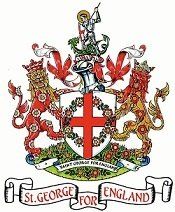A Few Facts about St. George
St. George, a Military Hero, and Christian Martyr
Saint George is widely associated with England and English ideals of honour, bravery, and gallantry, but he wasn’t actually English at all. He is believed to have been born in Cappadocia, now Eastern Turkey, around 270/280 AD. Probably of Iranian origin, he quickly converted to Christianity.
At the age of seventeen, he joined the Roman army and soon established a reputation amongst his peers for his virtuous behaviour, physical strength, military bearing, valour, handsome good looks. He served under the pagan Emperor Diocletian but never forgot his Christian faith. When the Emperor began persecuting Christians, St. George pleaded with him to spare their lives. However, St. George's pleas fell on deaf ears.
The Emperor consigned St. George to prison with instructions that he be tortured until he denied his faith in Christ. But St. George chose to defend his faith and was promptly beheaded at Nicomedia near Lyddia in Palestine on the 23rd of April in the year 303 AD.
The Foundation of St George’s Day
In 1222, the Council of Oxford declared April 23rd to be St. George’s Day, and he replaced St. Edmund the Martyr as England’s Patron Saint in the 14th Century.
In 1415, April 23rd was made a national feast day.
St. George, Patron Saint
St. George is the Patron Saint not only of England but also of Aragon, Catalonia, Ethiopia, Georgia, Greece, Lithuania, Palestine, Portugal, and Russia, as well as the cities of Amersfoort, Beirut, Bteghrine, Cáceres, Ferrara, Freiburg, Genoa, Ljubljana, Gozo, Pomorie, Qormi, Lod, and Moscow.
St. George is also the Patron Saint of scouts, soldiers, archers, cavalry and chivalry, farmers and field workers, riders and saddlers, and those suffering from leprosy and the plague.
The Legacy of St. George
Stories of St. George's courage soon spread, and his reputation grew quickly. He became known in Russia and the Ukraine as the Trophy Bearer. His remains are said to have been buried in the church that bears his name in Lydda. However, his head was carried to Rome, where it was preserved in the Church that is also dedicated to him.
St. George was beatified by the Roman Catholic Church and is also recognised in the liturgy of the Russian and Greek Orthodox Churches.
His reputation for virtue and chivalrous conduct became the spiritual inspiration of the Crusaders. By this time, the pennant, or flag, with a red cross on a white or silver background, became prominent as a means of recognition by English Knights.
In the 13th Century, there was a Guild of St. George to which the Honourable Company of Pikemen was related before evolving into the Honourable Artillery Company.
In the year 1348, King Edward III established the Knights of the Garter, the oldest order of Chivalry in Europe. The Order of the Garter was dedicated to the Blessed Virgin Mary, Edward the Confessor and St. George. The Insignia of the order can be seen in the armorial bearings of our Royal Society.
St. George and the Dragon – A Medieval Legend
Many years ago, near the town of Silene in Libya, by a freshwater spring, a dragon made its nest.
When the inhabitants came to collect water and avoid disturbing the dragon, they offered sheep as a distraction. However, very quickly, no more sheep were left to feed the monster, so the people of Silene decided to sacrifice maidens instead. Lots were drawn. Tragically, the princess was chosen to be the dragon’s first victim, and despite the Monarch’s protests, his daughter, Cleolinda, was ceremonially led to the beast.
Yet suddenly, before the dragon could lay a claw on the princess, a knight from the Crusades came riding by on his white stallion. St. George dismounted, for he was that knight, and drew his sword, protecting himself with the sign of the cross. He fought the dragon on foot, slaying the beast and saving the princess. The people of Silene were so grateful that they abandoned their pagan beliefs to convert to Christianity.
Thus, the legend of St. George, the Dragon Slayer, was born.


